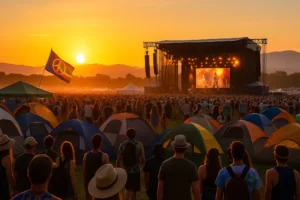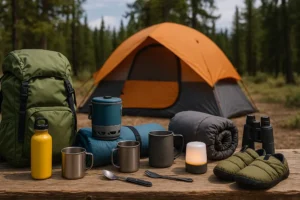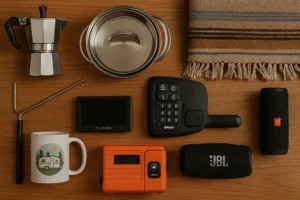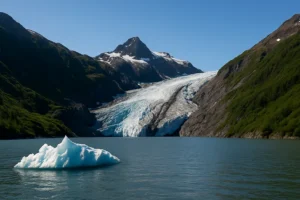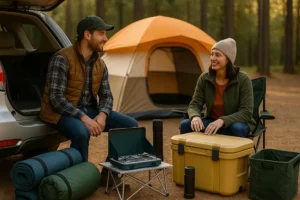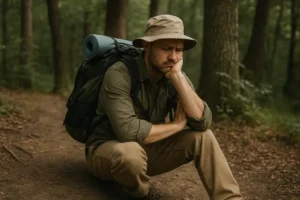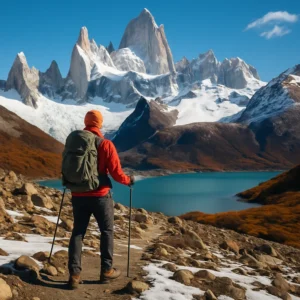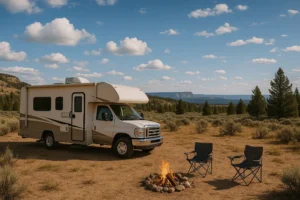There’s something utterly transformative about stargazing in the desert. Away from the city’s glow, the sky opens up like a velvet canvas splattered with billions of tiny lights. And when it comes to stargazing, few places on Earth rival the wonder of Edge of the World stargazing Sedona Arizona. High above the desert floor, where red rock cliffs meet the horizon, you’ll discover one of the most breathtaking night sky experiences imaginable.
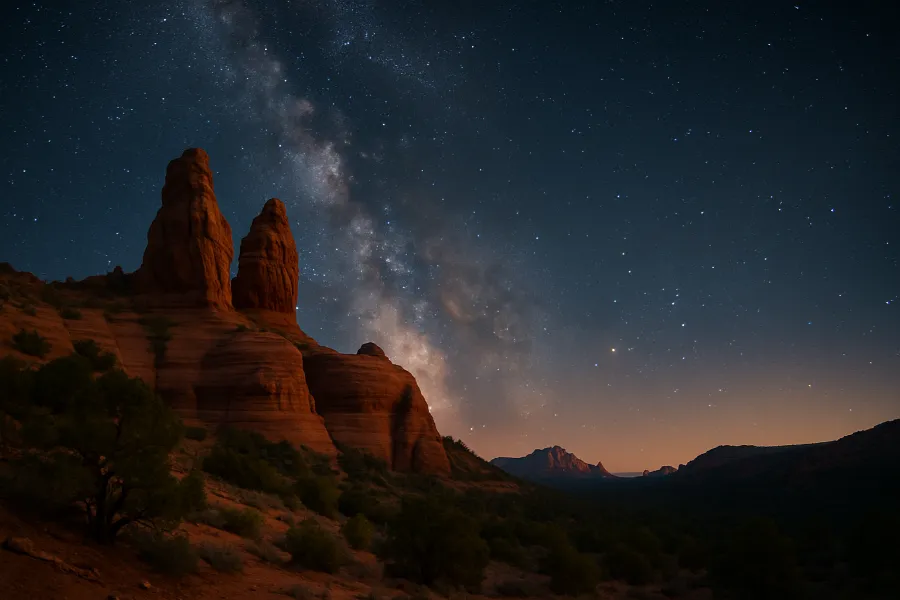
Tucked into the Coconino National Forest, the “Edge of the World” is exactly what its name suggests—a remote, rugged overlook perched between Sedona and Flagstaff that feels like the edge of Earth itself. Combine this epic viewpoint with Sedona’s designation as an International Dark Sky Community, and you have a recipe for one of the most unforgettable stargazing adventures in the Southwest.
Let’s explore what makes this spot so magical, when to visit, what to pack, and the celestial wonders you can expect to see.
The Unique Appeal of Edge of the World
The Edge of the World is no ordinary overlook. Locals also know it as East Pocket Knob, a dramatic cliff edge that sits at an elevation of roughly 7,000 feet. From here, the views stretch for miles over Oak Creek Canyon, Sedona’s crimson rock formations, and the Mogollon Rim.
By day, the vista is jaw-dropping. But at night? The world disappears, and the universe takes center stage. The high elevation and distance from major light sources mean that on a clear night, you can see thousands of stars with the naked eye. It’s one of those rare places where the Milky Way arcs boldly across the sky, its soft glow visible without binoculars or telescopes.
Unlike Sedona’s more accessible stargazing locations, Edge of the World requires a rugged drive on forest service roads. But the remoteness is exactly what makes it so special—you’ll have a quiet, uninterrupted view of the cosmos from a place that feels like it belongs to another realm.
When to Stargaze in Sedona
Timing is everything for stargazing at Edge of the World in Sedona, Arizona. Here are some factors to consider:
- Best Seasons: Fall and spring are ideal, offering cool but not freezing nighttime temperatures. Winter nights are exceptionally crisp but can be bitterly cold at this elevation. Summer brings monsoon storms in July and August, often clouding out the skies.
- Moon Phases: Aim for a new moon or the days surrounding it for the darkest skies. The less moonlight, the more dazzling the Milky Way. A quarter moon can still be magical, especially if you want natural light to illuminate Sedona’s red rock formations.
- Clear Skies: Sedona averages nearly 300 clear days per year. Check local forecasts before heading out, and avoid nights with heavy haze or clouds.
Pro tip: Use astronomy apps like SkySafari or Star Walk 2 to plan your viewing night. They’ll help you anticipate which constellations, planets, or deep-sky objects will be visible.
What to Bring for a Successful Stargazing Night
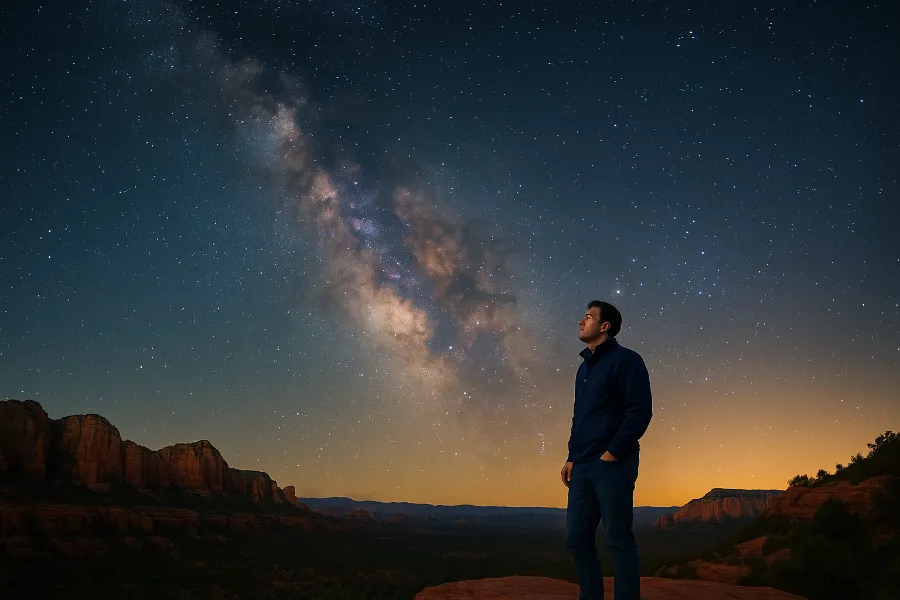
Packing right can make or break your night under the stars. Here’s a quick checklist:
- Warm Clothing: Even in summer, nights at 7,000 feet can get chilly. Layer up with jackets, hats, and gloves if needed.
- Blanket or Camping Chairs: Comfort is key when you’re lying back for hours of skywatching.
- Red Flashlight: White light ruins night vision. A red beam preserves your eyes’ adjustment to the dark.
- Insect Repellent: Depending on the season, mosquitos may be out.
- Water and Snacks: Edge of the World is remote—come prepared.
- Camera Gear: Tripod, wide-angle lens, and remote shutter release for astrophotography.
- Navigation: GPS or offline maps—cell service can be spotty in the forest.
Optional but fun: bring a telescope or binoculars to magnify galaxies, planets, and nebulae.
Best Stargazing Spots Around Sedona (Including Edge of the World)
While the Edge of the World is the crown jewel, Sedona offers several incredible stargazing locations. Here’s a roundup of the best:
Beaverhead Flat Scenic Overlook
Located off State Route 179, Beaverhead Flat is a little-known pullout that offers vast sky views. Easy to access, it’s perfect for a casual evening under the stars.
Dry Creek Road
A scenic dirt road west of town, Dry Creek offers several trailheads and parking pullouts away from the glow of Sedona. Simply stop where the skies feel darkest and look up.
Fay Canyon
This short, sandy trail leads to an overlook that feels worlds away. With its quiet canyon walls framing the sky, it’s an intimate setting for stargazing.
Aerie Trailhead
By day, it’s a biking hotspot. By night, the parking lot transforms into a stargazer’s haven. Photographers especially love capturing the Milky Way above Sedona’s red rocks here.
Two Trees Observation Area
A local favorite, Two Trees is popular with astronomy clubs and amateur stargazers alike. Its open field makes it easy to set up telescopes or cameras.
Merry Go Round Rock
Accessible by Schnebly Hill Road, this mountaintop overlook removes you even further from city lights. Bring a flashlight and a sense of adventure.
Each of these locations has its charm, but if you want the most dramatic “edge of the world” feeling, the namesake site delivers.
What You Can Expect to See
On a clear night, the stargazing at Edge of the World in Sedona, Arizona will take your breath away. Here are some celestial wonders often visible:
- The Milky Way Galaxy: Best viewed in summer, stretching like a glowing river across the sky.
- Planets: Jupiter and Saturn dazzle with their brightness; Mars shines red; Venus glows just after sunset or before sunrise.
- Star Clusters: The Pleiades (Seven Sisters) and the Double Cluster in Perseus sparkle like diamonds.
- Galaxies: Andromeda appears as a faint smudge to the naked eye, a reminder of how vast the universe is.
- Nebulae: The Orion Nebula, visible in winter, is one of the most photographed features of the night sky.
- Shooting Stars: Sedona’s dark skies make meteor showers spectacular events. The Perseids in August and the Geminids in December are annual highlights.
Even the International Space Station can sometimes be spotted crossing overhead—a fast-moving, bright white dot gliding silently above.
Guided Tours and Astronomy Experiences
If you’d like expert insights alongside your stargazing, Sedona offers several guided astronomy tours. Companies like Evening Sky Tours and Sedona Stargazing provide high-powered telescopes, blankets, and knowledgeable astronomers who explain the stories behind constellations and the science of the cosmos. These tours often include views of deep-sky objects like the Whirlpool Galaxy or the Crab Nebula, objects you might miss on your own.
For those who prefer a blend of nature and science, ranger-led star parties at Red Rock State Park are another option. These events combine astronomy education with hands-on telescope viewing.
Tips for Photographers and Night Sky Lovers
Stargazing is awe-inspiring, but capturing it on camera is its own adventure. If astrophotography is your goal, here are some quick tips:
- Use a tripod to avoid blur.
- Set your camera to manual mode with a wide aperture (f/2.8 or lower if possible).
- Start with a shutter speed of 15–25 seconds and adjust from there.
- Use a low ISO (800–1600) to reduce noise while maintaining light capture.
- Experiment with including foreground elements like Sedona’s red rock formations for dramatic compositions.
Patience is key—some of the best shots come after hours of trial and error.
Why Edge of the World Should Be on Your Bucket List
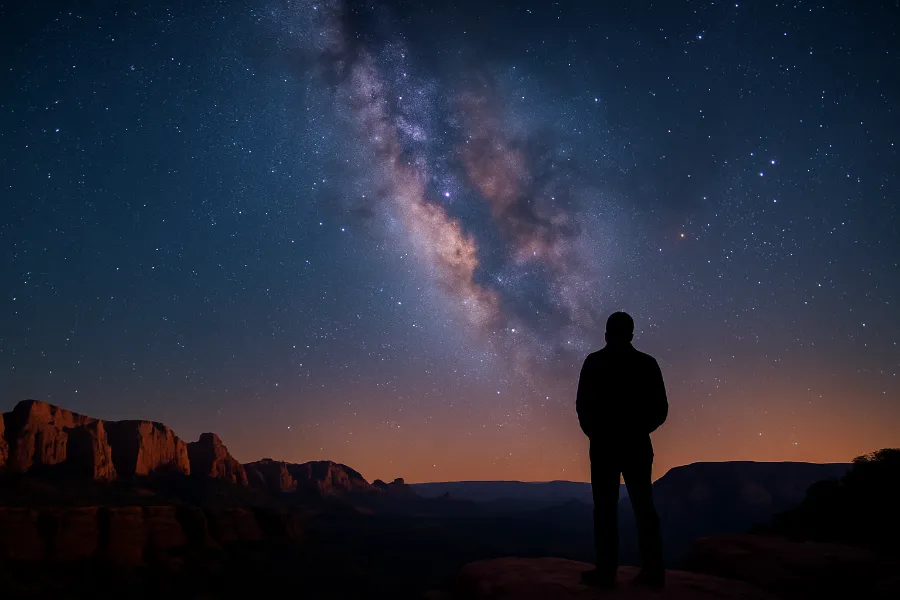
The magic of Edge of the World stargazing Sedona Arizona lies not only in the brilliance of the sky but also in the perspective it brings. Standing on a cliff that feels like the very edge of the planet, looking out into galaxies millions of light years away, it’s impossible not to feel humbled. Problems shrink. Wonder expands. Time slows down.
Whether you’re a seasoned astronomer, a night photographer, or simply someone who wants to reconnect with nature, the experience of stargazing here is unforgettable. It’s a reminder that while our world is beautiful, it’s just a small part of something far greater. And sometimes, the best way to find yourself is to look up.

